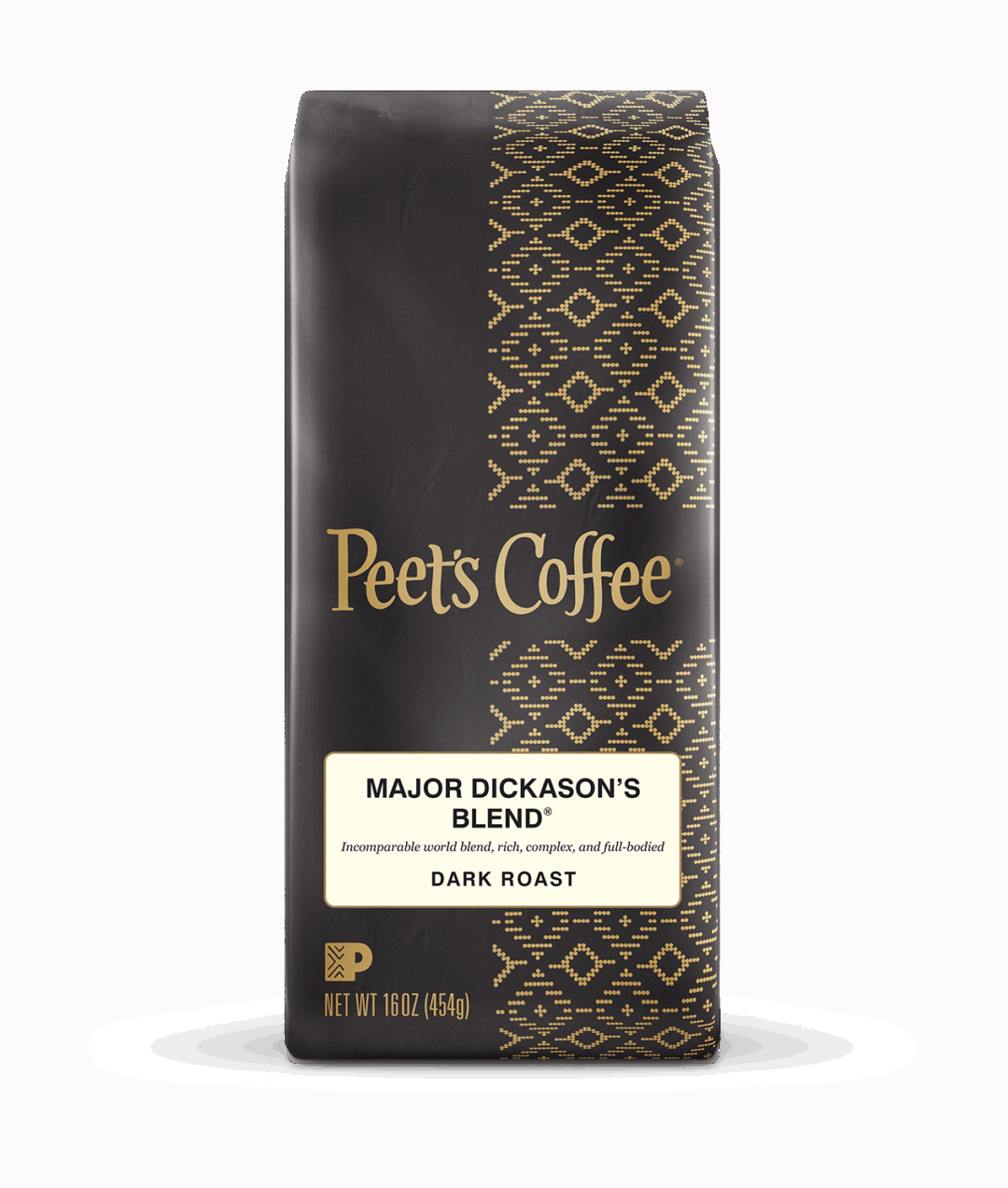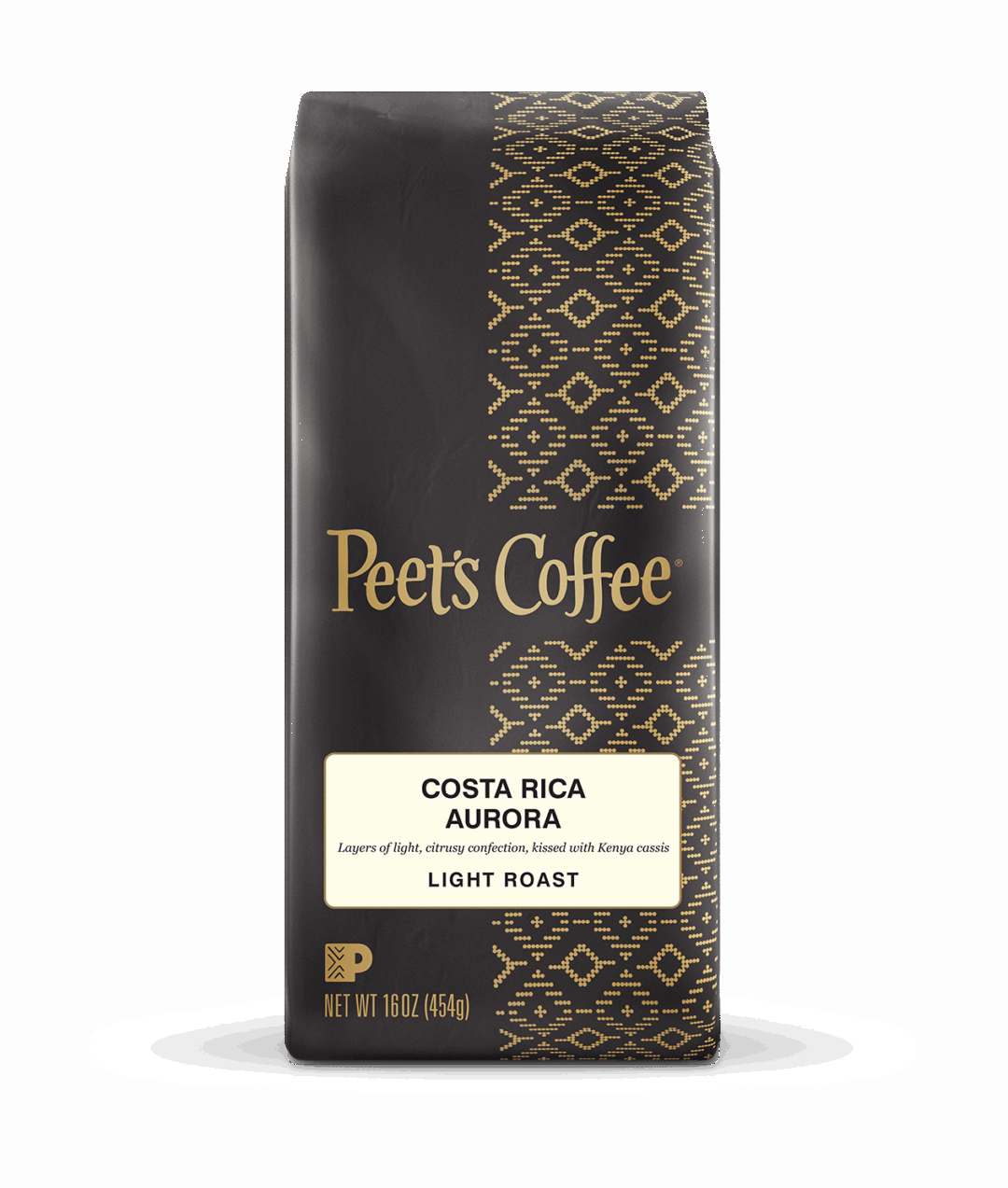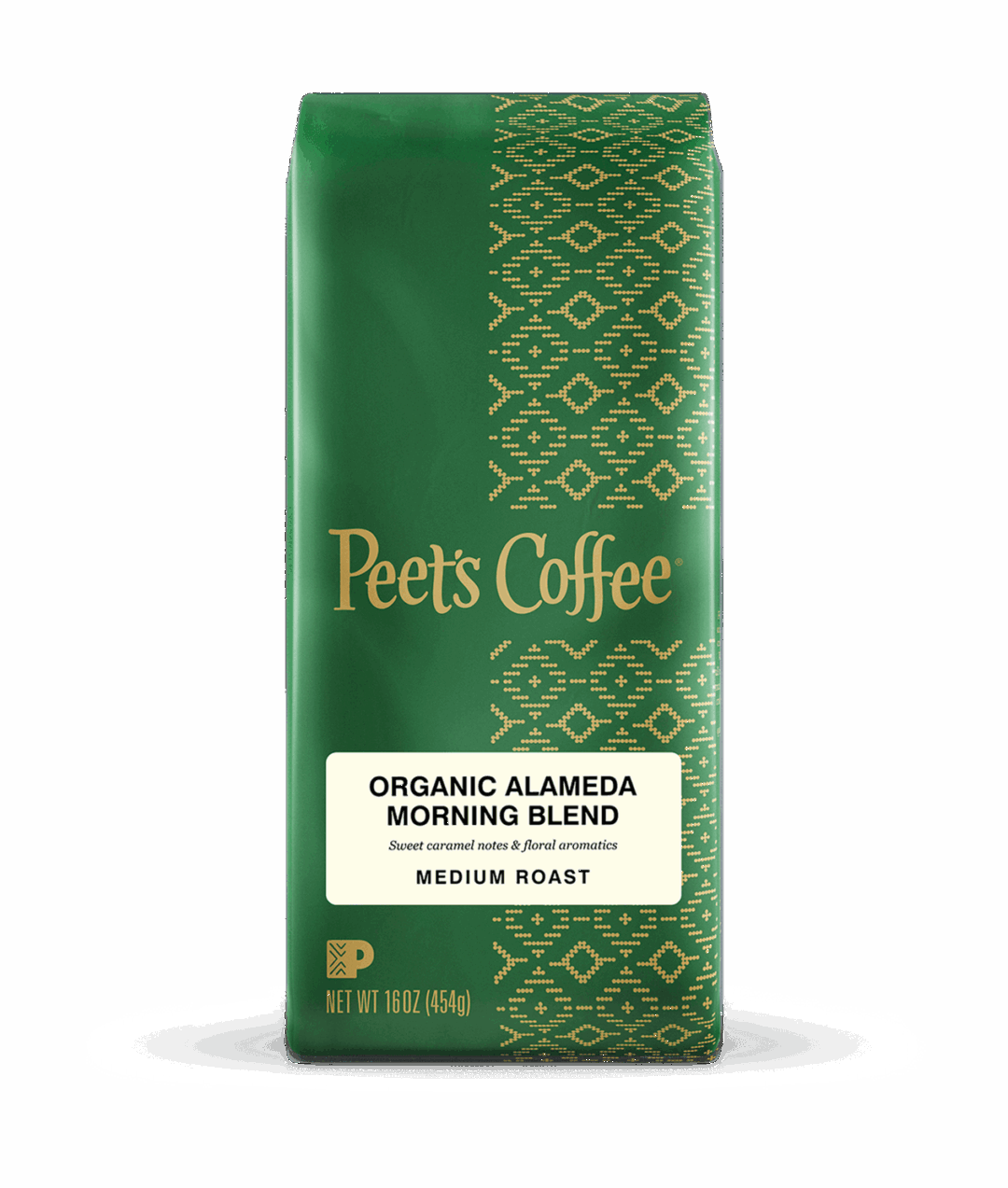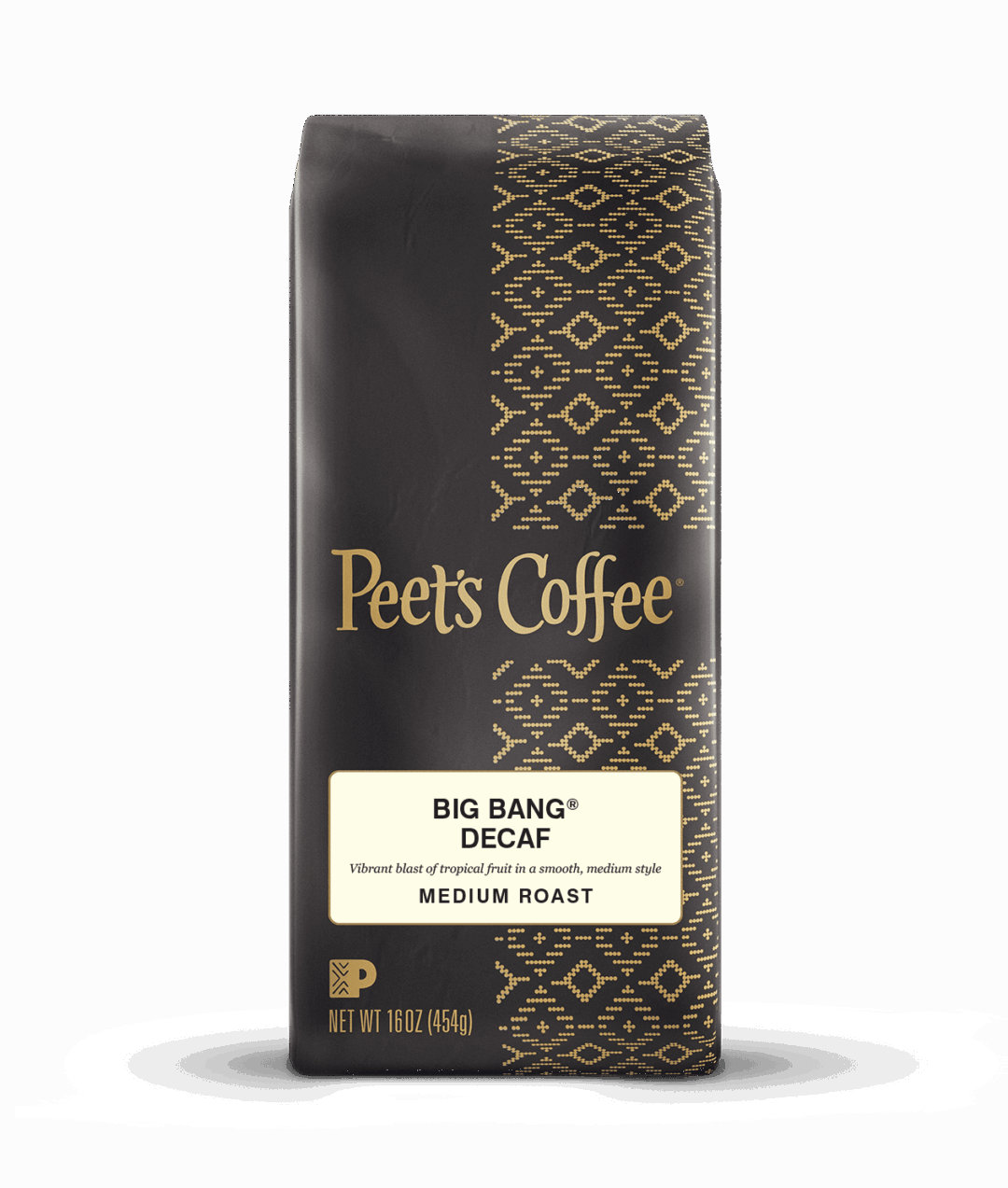
Peet’s Coffee was founded in Berkeley, California, in 1966 by Alfred Peet, a Dutch immigrant who grew up in the coffee and tea business in Holland. After emigrating to the United States, Peet was dismayed by the mediocre, mass-market coffee popular at the time, dominated by vacuum-packed percolator grind and cheap robusta beans. Peet’s vision was to introduce Americans to the strong, aromatic brews favored in Europe, sourcing better beans and trying different roasts (particularly dark roasts).
Peet’s Coffee is now a global brand, yet it still roasts coffee daily in California.
More Background
[Editor’s note: Geni.us links may be affiliate.]
Peet’s Coffee is often described as “The Original Craft Coffee,” credited with helping revolutionize American coffee culture. Only 15–20% of Peet’s sales come from brewed coffee; the bulk is from whole beans and teas, underscoring its reputation as a specialty roaster. The company operates hundreds of retail stores and maintains a robust online and mail-order business selling beans and teas, in addition to being found in grocery stores and “megamarts.”
Peet’s sources beans from the world’s coffee growing regions, including South America, Africa, and Asia. Roasting is performed daily to guarantee freshness, and many blends are roasted to order. The company is also dedicated to responsible sourcing, with many coffees certified organic or sustainably grown. In recent years, Peet’s has expanded its offerings with curated seasonal blends and limited releases, further cementing its reputation for quality and innovation.
My Experience With Peet’s Coffees
Peet’s offers quite a number of coffee blends, in light, medium, and dark roasts–over 40 by my last count. To keep this article manageable I selected one from each roast, plus a decaf. I used the whole bean version and ground it myself to the proper grind for the brewing processes I used for evaluating: drip, pour-over, and Aeropress. However these coffees are also offered in pre-ground bags (drip, Espresso, K-cup, etc.). I should mention that the whole beans were recently roasted, quite an accomplishment for a commodity so widely inventoried in mass-market outlets!
I admittedly have a fairly insensitive sense of taste and smell, so I enlisted the help of several other people to get a better understanding of the coffees. Of course, this being The Black Coffee Life, we tasted all these coffees without sweeteners or creamers! With that in mind, here are my notes.
Major Dickason’s Blend — Tasting Notes

Major Dickason’s Blend is Peet’s flagship dark roast, developed in collaboration with an ardent customer in the company’s early years. It’s a good example of Peet’s goal of deep, robust flavors, yet it maintains a remarkable complexity. Peet’s suggests that this blend is best brewed with a French press, and indeed I think it was slightly better out of my Aeropress but not dramatically so…I am perfectly happy with this made even in a drip coffee machine!
- Aroma: Dense and earthy, with some drinkers noting a lingering sweetness.
- Taste: Full-bodied, with prominent caramel flavors layered over more subtle smokey/nutty notes and dark chocolate sweetness. I find “bold” rather than “dark” may be a better descriptor for me, as other dark roasts brands I’ve tried have been strong and bitter.
- Mouthfeel: Smooth, velvety, with a slight dry finish.
- Acidity: Mild, designed to balance the caramel and other notes. Some drinkers consider Major Dickason’s a low-acid drinking experience, (though it is not marketed as low acid).
- Impression: This blend is a great choice for those who appreciate complexity without excessive bitterness or overwhelming smokiness. It’s often recommended as a daily drinker or as a lighter alternative to a deeper French roast.
Costa Rica Aurora — Tasting Notes

Costa Rica Aurora stands out in Peet’s lineup for its bright flavor profile and aroma, blending premium Costa Rican and Kenyan coffee beans for floral depth. Peet’s recommends this coffee brewed “cold brew” style but frankly I preferred the pour-over method. But no matter how I brewed it the results were excellent all the way around.
- Roast: Light roast, emphasizing sweetness and fruitiness.
- Taste: Layers of black cherry and a strong molasses undertone dominate the cup. Some tasters got the hint of lemon bar (sweet citrus) that Peet’s mentions in the taste profile of this coffee, but some didn’t.
- Aroma: Floral and citric top notes.
- Acidity: High, providing a lively sensation that leaves a crisp finish.
- Mouthfeel: Light to medium, with one drinker suggesting a note of black currant.
- Impression: Costa Rica Aurora is for fans of more elegant, nuanced coffees where “brightness” takes center stage. Its complex blend of Costa Rican and Kenyan beans gives it both clarity and a layered sweetness, making it particularly suited for pour-over or cold brew.
Organic Alameda Morning Blend — Tasting Notes

Alameda Morning Blend is a medium roast organic blend crafted to deliver a lively, caramel-sweet wake-up, with beans from Ethiopia, Sumatra, Colombia, and Honduras. Once again Peet’s suggests this is best brewed with a French press, and I got a slightly better result with an Aeropress, but all brewing methods produced an excellent flavor.
- Roast: Medium, balancing depth and brightness.
- Taste: Dulce de leche (caramel), cocoa, and subtle florals persist throughout.
- Aroma: Distinct floral and citric notes.
- Acidity: Moderate, adding vibrancy but not sharpness.
- Body: Medium to full, with earthy undertones and sweetness.
- Impression: Organic Alameda Morning Blend is versatile and approachable, great for that first cup of the morning. Its harmonious blend delivers a comforting, textured cup.
Big Bang Decaf — Tasting Notes

Big Bang Decaf is Peet’s most celebrated medium roast decaf, formulated to carry the boldness and vibrancy of Peet’s originals into the decaffeinated realm. Peet’s suggests making this via cold brew but most of my tasters preferred pour-over.
- Roast: Medium, designed for balance and depth.
- Taste: Bright, full-flavored for a decaf, with citrus notes and a subtle richness reminiscent of Major Dickason’s.
- Aroma: Complex, lively, and inviting, not as muted like many decafs.
- Acidity: Moderate, providing vibrance without sharpness.
- Body: Rounded and smooth, comparable to regular blends due to the use of high-quality beans and water-processing for decaffeination, which better preserves flavor integrity.
- Impression: Big Bang Decaf is a good option for those seeking a full-bodied, aromatic coffee without caffeine. Its water-processed decaffeination and choice beans ensure a cup that’s almost as rich and aromatic as Peet’s caffeinated classics.
Conclusion
Peet’s Coffee remains a touchstone for specialty coffee in America, built on Alfred Peet’s pursuit of bold, flavorful, and fresh coffee.
Peet’s is more than just a coffee brand; it’s a legacy, and its coffees continue to embody the artistry and excellence that began in a small Berkeley storefront nearly sixty years ago.